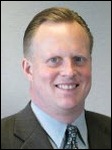News 8/5/11
Top News

![]() A diabetic computer security researcher proves that hackers could theoretically remotely control medical devices such as insulin pumps and glucose monitors, which don’t have enough battery power to encrypt their wireless signals. The same threat had already been demonstrated for defibrillators, but no real-world examples have surfaced.
A diabetic computer security researcher proves that hackers could theoretically remotely control medical devices such as insulin pumps and glucose monitors, which don’t have enough battery power to encrypt their wireless signals. The same threat had already been demonstrated for defibrillators, but no real-world examples have surfaced.
![]() From Gary: “Re: drchrono free EMR. I can’t find anything on their site about their revenue source other than VC funding. Is it advertiser supported?” The company says they’ll get back to me on that. Their free product is limited in storage and support and doesn’t include some functions (e-prescribing and electronic billing), so I assume they hope users will move up to a paid version. I don’t know much about the product, but their website is one of the slickest ones around.
From Gary: “Re: drchrono free EMR. I can’t find anything on their site about their revenue source other than VC funding. Is it advertiser supported?” The company says they’ll get back to me on that. Their free product is limited in storage and support and doesn’t include some functions (e-prescribing and electronic billing), so I assume they hope users will move up to a paid version. I don’t know much about the product, but their website is one of the slickest ones around.
HIStalk Announcements and Requests
![]() Listening: a new lost album from The Screaming Trees, a 1990s Seattle band with a fresh roots rock sound (even now) that mixes light grunge with dark twang and psychedelia, like minor chords REM meets Alice in Chains. They never made it big, but should have. I’m kind of loving it as I contribute my air drumming to the mix.
Listening: a new lost album from The Screaming Trees, a 1990s Seattle band with a fresh roots rock sound (even now) that mixes light grunge with dark twang and psychedelia, like minor chords REM meets Alice in Chains. They never made it big, but should have. I’m kind of loving it as I contribute my air drumming to the mix.
![]() I made a decision last week after careful deliberation: I’m phasing out animated sponsor ads on HIStalk on January 1. Sponsors are responding positively to Inga’s e-mail describing the change, which I appreciate – I think they know intuitively that everybody will benefit from less distraction and faster page loads, which will result (ironically) in more ad views and clicks. That’s the theory, anyway.
I made a decision last week after careful deliberation: I’m phasing out animated sponsor ads on HIStalk on January 1. Sponsors are responding positively to Inga’s e-mail describing the change, which I appreciate – I think they know intuitively that everybody will benefit from less distraction and faster page loads, which will result (ironically) in more ad views and clicks. That’s the theory, anyway.
![]() Inga will be back to full HIStalk duties shortly. If you want to make her return even more joyful, consider: (a) signing up for e-mail updates on HIStalk and HIStalk Practice; (b) give us the electronic version of the insincere Hollywood air kiss by friending us on Facebook and connecting with us on LinkedIn; (c) send us cool stuff like rumors and secret information; (d) click some sponsor ads to check out their offerings since I turfed off the “no more animated ads” sponsor e-mail to her to send and she probably needs to regain her stature in their eyes for being the messenger; and (e) use subtle peer pressure to send new readers our way since she loves poring over the readership stats.
Inga will be back to full HIStalk duties shortly. If you want to make her return even more joyful, consider: (a) signing up for e-mail updates on HIStalk and HIStalk Practice; (b) give us the electronic version of the insincere Hollywood air kiss by friending us on Facebook and connecting with us on LinkedIn; (c) send us cool stuff like rumors and secret information; (d) click some sponsor ads to check out their offerings since I turfed off the “no more animated ads” sponsor e-mail to her to send and she probably needs to regain her stature in their eyes for being the messenger; and (e) use subtle peer pressure to send new readers our way since she loves poring over the readership stats.
Acquisitions, Funding, Business, and Stock
ZocDoc, a provider of an online physician locating service, raises $50 million in Series C funding from DST Global. Other ZocDoc investors include Marc Benioff (Salesforce.com) and Jeff Bezos (Amazon).
Sales
St. Vincent’s Medical Center (CT) signs a seven-year agreement with GE Healthcare to upgrade to the SaaS version of several Streamline Health products for HIM.
Centegra Health System (IL) will implement iMDsoft’s MetaVision critical care system for all 113 of its monitored and ICU beds, integrating it with ADT, labs, CPOE, billing, scheduling, PACS, LDAP, and its GE EMR.
People
Paul Ruflin, former CEO of Eclipsys and Noteworthy Medical Systems, joins software tools vendor PreEmptive Solutions as president and COO.
Integrated Healthcare Strategies announces that William F. Jessee, MD will join the consulting firm as a SVP and senior advisor following his October 2011 retirement as MGMA’s president and CEO.
Surgical Information Systems (SIS) appoints Gary S. Long (above) to VP of North American sales and Jonathan C. Lujan to VP for Business Development & Strategic Planning.
David Kissinger, regional VP of maxIT Healthcare, is appointed to the board of directors of Southern Ohio HIMSS, also serving as its public relations committee chair.
ZirMed names former IDX/GE executive Thomas W. Butts president and CEO. He replaces Jerry Merritt, who stepped down “for personal reasons.”
Announcements and Implementations
North Colorado Medical Center goes live with CPOE as part of Banner Health’s $250 million Cerner EMR initiative.
Swedish Health Services (WA) expects the former Stevens Hospital to be live on Epic’s EMR by the fall of 2012. Swedish took over management of Stevens last year and is making $150 million in infrastructure upgrades.
Royal United Hospital Bath NHS Trust goes live on Cerner Millennium three years later than planned, caused by Fujistu’s termination as the local service provider.
RCM software provider Avisena partners with Intuit Health to make the Intuit Health portal available to Avisena practices.
![]() NextGen confirms the earlier rumor I ran – the company is working with MEDSEEK to create a new NextGen Enterprise Patient Portal for hospitals, allowing patients to access staff, review test results, make appointments, and request prescription refills in a single view. It’s business as usual for the existing NextGen Patient Portal – this is an alternative for a different audience.
NextGen confirms the earlier rumor I ran – the company is working with MEDSEEK to create a new NextGen Enterprise Patient Portal for hospitals, allowing patients to access staff, review test results, make appointments, and request prescription refills in a single view. It’s business as usual for the existing NextGen Patient Portal – this is an alternative for a different audience.
Ouachita County Medical Center (AR) chooses Healthcare Management Systems for its financial and clinical applications, including EDIS. Meanwhile, CMH Regional Health System/Clinton Memorial Hospital begins its implementation of HMS.
Oroville Hospital (CA), which uses a version of the WorldVistA EHR 2.0 that it customized, helps WorldVistA get it certified for outpatient Meaningful Use by contributing its self-developed e-prescribing module. They say it’s the first version of VistA to be certified for outpatient use. Oroville says it has spent $4 million hospital-wide on implementing the open source product, but did it all with internal IT resources.
Midland Memorial Hospital (TX) connects to the Nationwide Health Information Network and the Social Security Administration MEGAHIT project using the Medibridge.net HIE platform from EHR Doctors. It generates Continuity of Care Documents from VistA/CPRS like the Medsphere version that Midland uses.
Government and Politics
CMS reports that about 77,000 providers have registered for the Medicare and Medicaid EHR incentive program as of July. A total of 2,383 EPs have verified they met MU requirements; 137 attested unsuccessfully (though it’s unclear why.) CMS has issued almost $400 million in incentive payments.
Other
![]() US physician practices spend nearly four times as much per physicians Ontario in dealing with health insurers and payers. Though much of the difference stems from Canada’s single payer system versus the US’s multiple payer model, the authors of the Health Affairs-published study suggest there are ways that US health insurers could reduce costs and increase efficiencies.Other
US physician practices spend nearly four times as much per physicians Ontario in dealing with health insurers and payers. Though much of the difference stems from Canada’s single payer system versus the US’s multiple payer model, the authors of the Health Affairs-published study suggest there are ways that US health insurers could reduce costs and increase efficiencies.Other
An article in an Indian business publication says that companies there will get a lot of business from ARRA and ICD-10, quoting Bronx-Lebanon CIO Ivan Durbak. The hospital says it is saving at least 50% of the cost of its EHR project by issuing its $30 million contract to a Chennai-based outsourcer.
In Canada, Ontario Telemedicine Network is expanding by adding an Internet-based videoconferencing solution that participants can access on any PC.
![]() Emergency personnel in western North Carolina paid their respects Tuesday to Asheville Fire Department Captain Jeff Bowen, who died in a medical building fire last week after helping save an oncology clinic’s computers and electronic records.
Emergency personnel in western North Carolina paid their respects Tuesday to Asheville Fire Department Captain Jeff Bowen, who died in a medical building fire last week after helping save an oncology clinic’s computers and electronic records.
![]() Max Harry Weil MD, PhD, who in the 1950s developed the “shock ward” concept of today’s ICU, including crash carts, stat labs, and computer-monitored vital signs, died last week at 84.
Max Harry Weil MD, PhD, who in the 1950s developed the “shock ward” concept of today’s ICU, including crash carts, stat labs, and computer-monitored vital signs, died last week at 84.
![]() Odd lawsuit: the family of a man killed by his chemist wife, who poisoned him with the diagnostic agent thallium, sues her drug company employer, the hospital where he died, and six doctors. The suit claims he would still be alive “if only one of the world’s biggest drug makers and an accredited medical center had just done their jobs.”
Odd lawsuit: the family of a man killed by his chemist wife, who poisoned him with the diagnostic agent thallium, sues her drug company employer, the hospital where he died, and six doctors. The suit claims he would still be alive “if only one of the world’s biggest drug makers and an accredited medical center had just done their jobs.”
Sponsor Updates
- Regal Medical Group, a California-based IPA, announces a partnership with MyHealthDIRECT to assist its members in the care transition process.
- MEDSEEK earns a #5 ranking in the State of Alabama’s Best Companies to Work For program in the 50-249 employee category.
- Pamela Bradshaw RN, CCRN, NE-BC, CNO and VP of Nursing and Clinical Services at United Regional Health Care System (TX) credits Clairvia’s CVM Patient Acuity for higher levels of job satisfaction among staff nurses and better patient care.
- CareTech Solutions announces a partnership with Cardinal Path, a Google Analytics Certified Partner, as a value-add service for its CareWorks content management system.
- FormFast will host a free August 18 webinar entitled EMRs Need More to Support Meaningful Use.
- TeleTracking Technology is nominated for Tech Titan of the Year for 2011 by the Pittsburgh Technology Council.
- Perceptive Software expands its global OEM program.
- Nuesoft releases a video on reducing medical practice risk through strong HR policies.
- Merge Healthcare announces sales of $57M in the second quarter. The company also posts a podcast on radiologists and Meaningful Use.
- Lorie Richardson of Hayes Management Consulting discusses eight ways IT can improve training and adoption rates.
- Concerro offers a webcast entitled CXO, WOW & WOM: A Powerful Approach to Patient Experience Management Tied to the Bottom Line.
EPtalk by Dr. Jayne
Nominations are now open for the 2011 HIMSS Award and Recognition Program. Too bad Mr. H is anonymous, because he certainly meets some of the criteria for service to the industry. Nominations are open through October 14.
Weird drug news: the first FDA-approved treatment for scorpion stings has arrived. That’s good news for those of you in Arizona, which plays home to most of the poisonous scorpions in the US. I’ve spent enough time in the southwest to be freaked out by these little buggers. Although most adults don’t need treatment if stung, this is good news for children who might have a too-close encounter of the Centuroides sculpturatus kind.
Like many of you, I’m pretty tired of US politics and healthcare reform being flogged during the debt ceiling discussions. One bright spot in government though is the “Restoring Access to Medication Act” introduced as H.R. 2529 and S. 1368. This would allow patients to use their flexible spending accounts and health savings accounts to purchase over-the-counter (OTC) medications without a physician order, as they could prior to 2011.
I can attest that this issue has caused quite a bit of patient angst and increased healthcare spending as patients come in for office visits to obtain prescriptions for OTC drugs, not to mention healthcare IT spending as many practices created custom order sets and forms to be able to rapidly order a broad spectrum of OTC drugs for patients in a single click. I shuddered the first time I had one of these visits as I wrote scripts for Tums, hydrocortisone cream, and a pregnancy test. (Even worse is the fact that a pregnancy test is not an OTC drug and that a script isn’t required – but my patient had a letter from her benefit administrator demanding a script and stating that they wouldn’t honor the examples given in the FAQ section of the Internal Revenue Service website.) It’s about doing what’s right for the patient, regardless. Let’s hope Congress gets this one right.
I’ve mentioned my thoughts on sunscreen and tanning before, as well as my appreciation for a good glass of wine. A recent study from the Journal of Agricultural and Food Chemistry notes that “A compound found in grapes and grape derivatives may protect skin cells from skin-damaging ultraviolet (UV) radiation.” Maybe Inga and I can sign up for the follow-up study.
There are days when I joke about needing to wear body armor to work, but I’m usually referring to the need for protection from the slings and arrows of my colleagues. The LA Times reports on this, noting that 10% of emergency department nurses had been assaulted in the week prior to being surveyed. Most violence is from patients and family members.
I was recently at a training techniques class with a group of professional Health Informatics trainers. There were a few newbies in the group, and the topic of physicians “getting physical” during EHR training came up. Nearly all trainers reported having something thrown at or near them – from pens and paper to coffee cups, all the way up to laptops. One even reported a physician tipping over a computer-on-wheels in frustration. Seriously, people. It embarrasses me that physicians behave like this. Discipline for these kinds of infractions should be the same as that for surgeons that throw instruments in the operating suite. The fact that EHR or CPOE training is involved is no excuse.
Last, our nominee for quote of the week: This gem is from CMIO magazine and William F. Bria MD, President of the Association of Medical Directors of information Systems (AMDIS). “Another usability problem is the expectation of some physicians that the whole point of these systems is to make them more efficient and happy.” If you’re a project manager out there selling technology as a way to increase physician satisfaction, please think of another marketing bullet point. How about patient safety? That’s something we should all be able to get behind.

Contacts
Mr. H, Inga, Dr. Jayne, Dr. Gregg.








































































































Why does the displayed "exam room of the future" still have the classic "clinician has their back to the patient"…